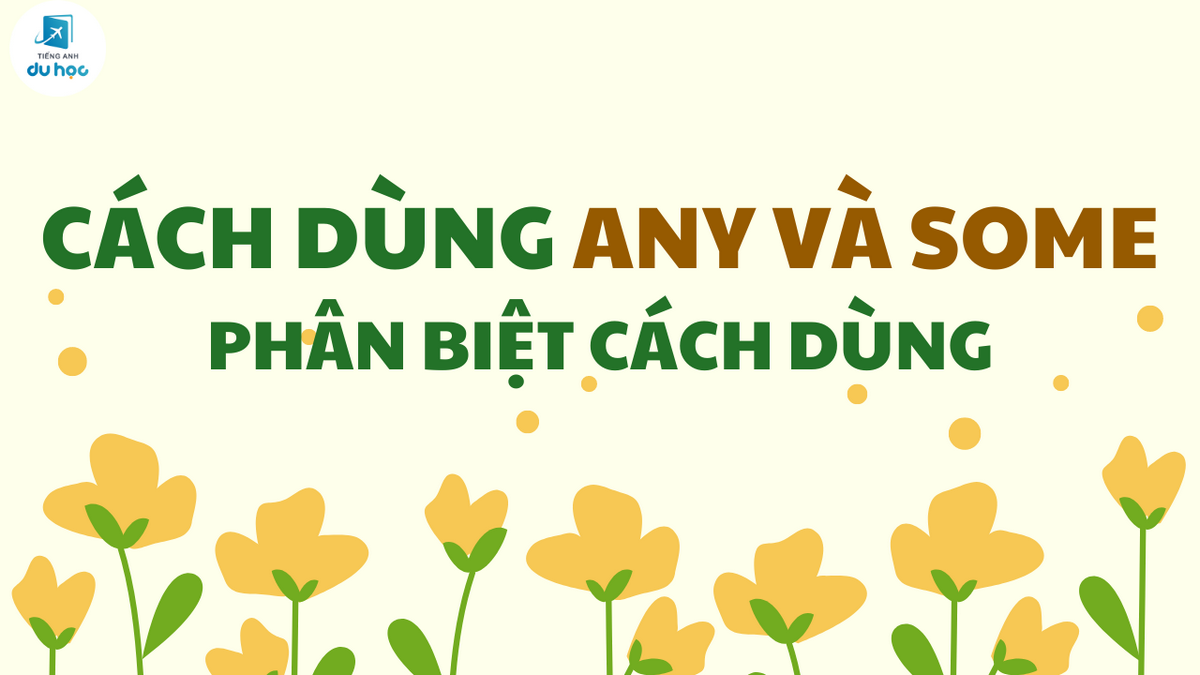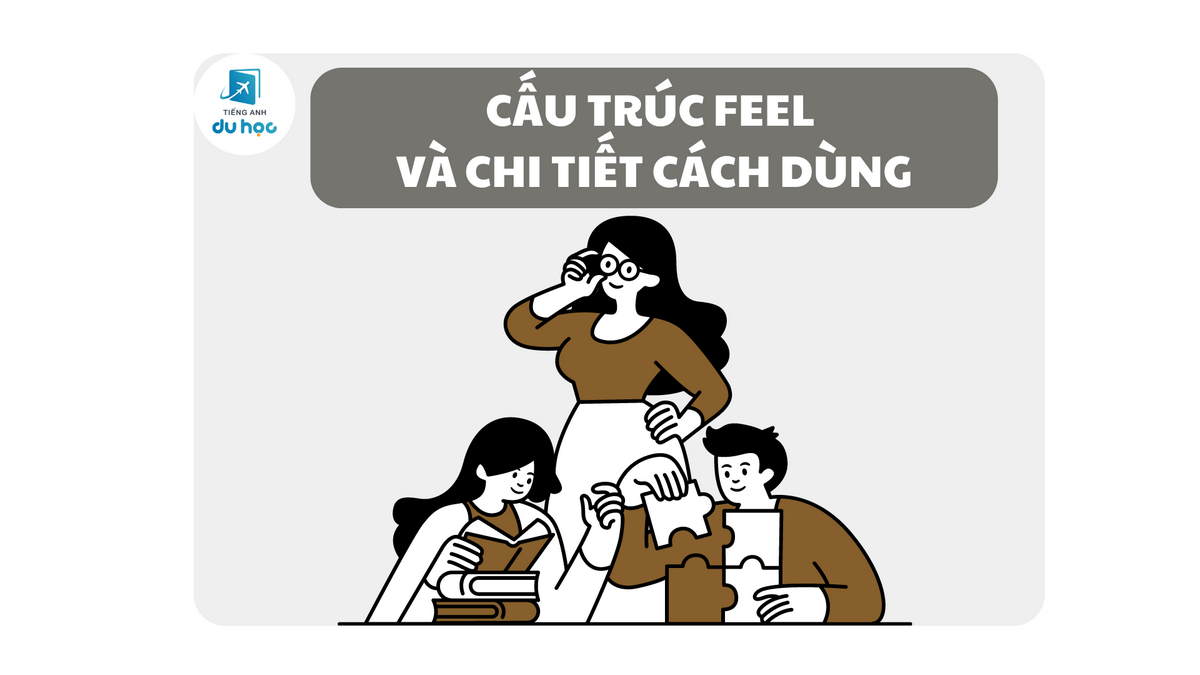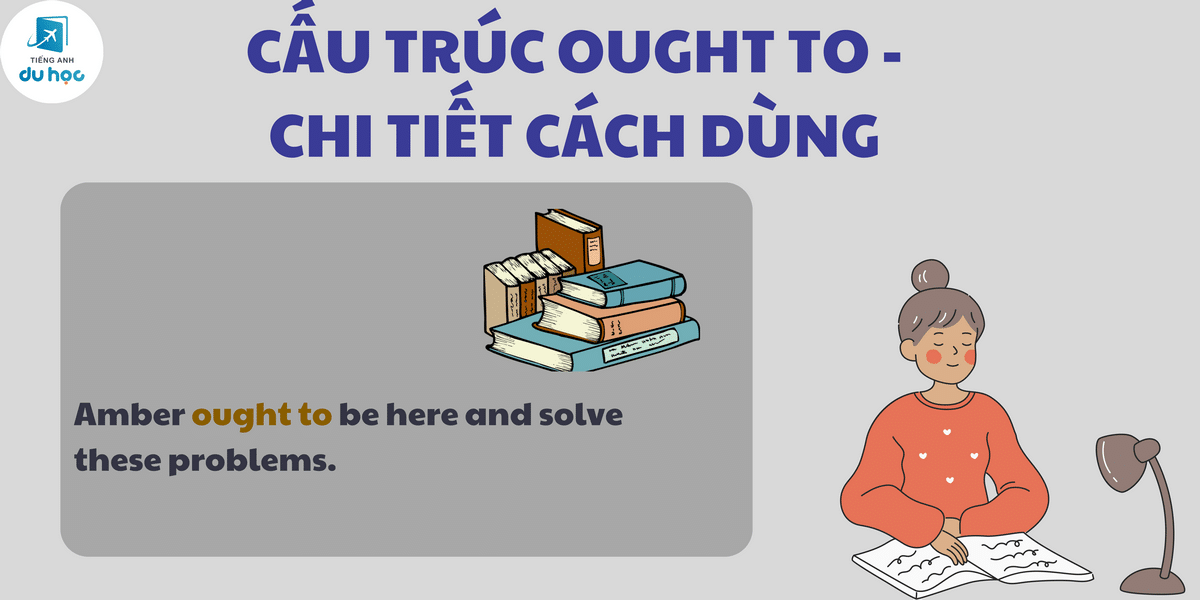Đại từ là khái niệm để chỉ một dạng thay thế cho một danh từ, động từ, tính từ… để chỉ một sự vật hoặc sự việc cụ thể, có hoặc không có từ hạn định.
Đại từ rất dễ nhầm với danh từ nếu các bạn không đọc và hiểu rõ câu và cú pháp. Trong bài viết này tienganhduhoc.vn sẽ giới thiệu những kiến thức cơ bản về đại từ trong tiếng Anh tất tần tật về Đại từ chỉ định, sở hữu, bất định, nhân xưng, phản thân, quan hệ…
Xem thêm bài viết được quan tâm nhất:
- Cách dùng mệnh đề quan hệ xác định và không xác định
- Tân ngữ là gì trong tiếng Anh và cách sử dụng chi tiết
- Cách dùng và bài tập về other, another, the other có đáp án
- Cách đặt câu hỏi với which/ how/ whose/ what trong tiếng Anh
1. Đại từ là gì?
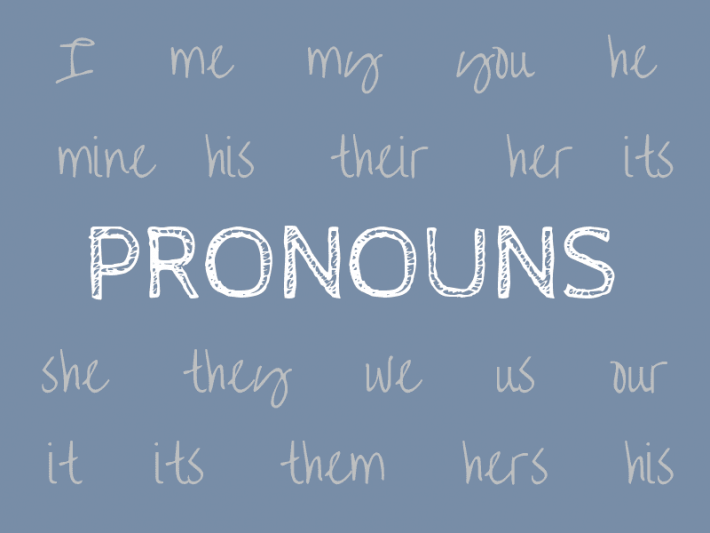
1.1 Định nghĩa
Đại từ là những từ thay thế cho danh từ.
Ví dụ: My teacher is Ms. Phuong. I like her so much
2. Các loại đại từ
Đại từ trong tiếng Anh có nhiều loại, trong đó có những từ vừa là đại từ (thay thế cho danh từ) vừa là tính từ. Có thể chia ra như sau:
- Đại từ nhân xưng (personal pronouns): I, we, you, he, she, it, they…
Ví dụ: This is my book. It is very interesting.
- Đại từ chỉ định (demonstrative pronouns): This, that, these, those.
Ví dụ: Ms. Jones’ report is better than that of other colleagues.
Lưu ý: Các đại từ này còn được dùng như tính từ.
Ví dụ: This house is big. (This là tính từ)
- Đại từ bất định (indefinite pronouns): Something, anything, each, someone, somebody,
everything…
Ví dụ: There are ten apples on the table. Give me some.
- Số từ (numerals): One, two, three, a hundred, the first, the second, the third…
Ví dụ: There are two (adj) apples here (adv) and there are four there (adv). → four là đại từ dạng số từ.
Ví dụ: I’m the first student to come to class. → The first là adj
N.A was the first to set foot on the Moon. → The first là đại từ
- Đại từ nghi vấn (interrogative pronouns): Who, what, which…
Ví dụ: Who teaches you English?
What’s your name?
- Đại từ sở hữu (possessive pronouns): Mine, ours, ours, theirs… (không cần có danh từ đi kèm). Phân biệt với tính từ sở hữu: my, your, our, their… cần có danh từ đi kèm.
Ví dụ: My bike is newer than yours
adj pronoun
- Đại từ tân ngữ: me, her, him,
Ví dụ: My mother is very kind. I love her.
- Đại từ phản thân (reflexive pronouns): myself, yourself, ourselves, themselves…
Ví dụ: I’ll do it myself.
2.1. Đại từ nhân xưng và đại từ tân ngữ
- Hình thức
| Chủ ngữ | Tân ngữ của động từ | |
| Số ít | I you he/she/it | me you him/her/it |
| Số nhiều | we you they | us you them |
Ví dụ: Did you see the snake?
Yes, I saw it and it saw me
Did it frighten you?
- Vị trí của đại từ làm tân ngữ
a. Tân ngữ gián tiếp và tân ngữ trực tiếp
Tân ngữ gián tiếp đứng trước tân ngữ trực tiếp:
Ví dụ: I made her a cake.
I sent her a cake.
=> Her là tân ngữ gián tiếp, a cake là tân ngữ trực tiếp.
Tuy nhiên, nếu đưa tân ngữ trực tiếp đứng ngay sau động từ thì phải sử dụng giới từ trước tân ngữ gián tiếp.
Ví dụ: I made a cake for her.
I bought a cake for her.
I sent a cake for her.
I gave a cake to her.
b. Đại từ làm tân ngữ của những cụm động từ
Với nhiều cụm động từ thì một danh từ làm tân ngữ có thể ở giữa hay ở cuối cụm động từ.
Ví dụ: Hand your paper in/Hand in your paper.
Take your shoes off/Take off your shoes.
Hang your coat up/Hang up your coat.
Lưu ý: Một đại từ làm tân ngữ thì phải được đặt ở giữa cụm động từ
Ví dụ: Hand them in.
Take them off.
Hang it up.
2.2. Các cách dùng của “it”
- “It” thông thường được dùng thay cho một vật hay một con vật mà chúng ta không biết giống của nó và đôi khi “it” dùng cho một em bé hay môt đứa nhỏ
Ví dụ: Where’s my map? It is on the table.
Look at that bird. It always comes to my window.
Her new baby is tiny. It only weighs 2 kilos.
- “It” có thể được dùng cho người ở những câu như là:
– Ann (on phone): Who is that?/Who is it?
Bill: It’s me
– Is that Tom over there? No, it’s Peter.
- “It” được dùng trong các thành ngữ chỉ thời gian, khoảng cách, thời tiết, nhiệt độ, thủy triều:
Ví dụ: – What time is it? It is for six.
– What’s the date? It’s the third of March.
– How far is it from your house to your school? – It’s about 2 km.
– How long does it take to get there? It depends on how you go.
– It is raining/snowing/freezing.
– It’s high tide/low tide.
- “It/This” có thể tiêu biểu cho một cụm từ hay mệnh đề đã đề cập ở trước:
Ví dụ: He smokes in bed, though I don’t like it.
He suggested flying, but I thought it would cost too much.
- Cấu trúc: It + is + a period of time + since + Mốc thời gian/Mệnh đề (ở quá khứ)
Ví dụ: It’s three years since I last saw him.
= I haven’t seen him for three years.
- It dùng để mở đầu:
- It có thể mở đầu câu theo kiểu câu tách:
Ví dụ: – It was Peter who lent us the money.
– It’s today that he’s going (not tomorrow).
– It’s pilots that we need, not ground staff.
– It’s they who came late.
- It is + adj + to + V
Ví dụ: – It is easy to criticize someone.
= To criticize someone is easy.
– It is better to be early.
= To be early is better.
- find + it + adj + to + v
Ví dụ: – I often find it difficult to learn new words.
= I often find that it is difficult to learn new words.
– We found it impossible to get visas.
- It có thể dùng một cách tương tự như khi chủ ngữ của một câu là một mệnh đề:
Ví dụ: That prices will go up is certain.
→ It’s certain that prices will go up.
That he hasn’t phoned is odd.
→ It’s odd that he hasn’t phoned.
- It cũng dùng như một chủ ngữ cho các động từ “seem, appear, look”:
Ví dụ: It seems that they know what they’re doing.
It appears that there has been a mistake.
It looks like rain (= it looks as if it’s going to rain).
2.3. Tính từ và đại từ sở hữu
| Tính từ sở hữu | Đại từ sở hữu |
| My | Mine |
| Your | Yours |
| Our | Ours |
| Their | Theirs |
| His | His |
| Her | Hers |
| It | Its |
Lưu ý: it’s = it is; Hình thức tính từ sở hữu của “it” là its, chứ không phải là it’s
Ví dụ: A happy dog wags its tail.
- Đại từ sở hữu thay cho tính từ sở hữu + danh từ
Ví dụ: I have received my report. Have you received yours (= your report)?
My report is better than yours. (= your report)
This is their car. That car is theirs, too.
Đại từ sở hữu thay thế cho tính từ sở hữu + danh từ mà ta không muốn nhắc lại.
Tương tự: other + N = others
Ví dụ: I like Chelsea but other students like MU.
= I like Chelsea but others like MU.
- Để thêm sự nhấn mạnh, own (riêng) có thể được đặt sau tính từ sở hữu: my, your, his, … và sau one’s
Ví dụ: I have my own business. = I have a business of my own.
My own room
Her own idea
– Own có thể là một tính từ như trên hay là một đại từ: a room of one’s own
- Ta dùng đại từ “one” khi muốn chỉ chung chung một người nào đó.
Ví dụ: One must take care of one’s parents.
⇒ one’s là tính từ sở hữu của đại từ one
Lưu ý: one of my friends = a friend of mine
one of her sisters = a sister of hers
Xem thêm các bài viết liên quan khác tại đây nhé:
2.4. Đại từ phản thân

| Chủ ngữ | Tân ngữ | Tính từ sở hữu | Đại từ sở hữu | Đại từ phản thân |
| I | Me | My | Mine | Myself |
| You | You | Your | Yours | Yourself |
| We | Us | Our | Ours | Ourselves |
| They | Them | Their | Theirs | Themselves |
| He | Him | His | His | Himself |
| She | Her | Her | Hers | Herself |
| It | It | Its | Its | Itself |
Cách sử dụng của đại từ phản thân:
a. Myself, yourself, v.v… được dùng như tân ngữ của một động từ khi chủ ngữ và tân ngữ cũng là một người
Ví dụ: – She looks at herself in the mirror.
– Tom and Ann blamed themselves for the accident.
Lưu ý: Sẽ có sự thay đổi nghĩa nếu chúng ta thay đổi đại từ phản thân bằng đại từ tương hỗ “each other”
Ví dụ: Tom and Ann blamed each other.
b. Đại từ phản thân dùng để nhấn mạnh
- Đứng ngay sau từ muốn nhấn mạnh:
Ví dụ: I myself wrote this book.
- Đứng cuối câu:
Ví dụ: I wrote this book myself.
Lưu ý: I wrote this book itself.
I want to meet Ms. Phuong herself (not her husband).
Lưu ý: by oneself = alone = on one’s own
Ví dụ: She wrote the report by herself.
I’m on my own. = I’m alone.
2.5. Đại từ bất định
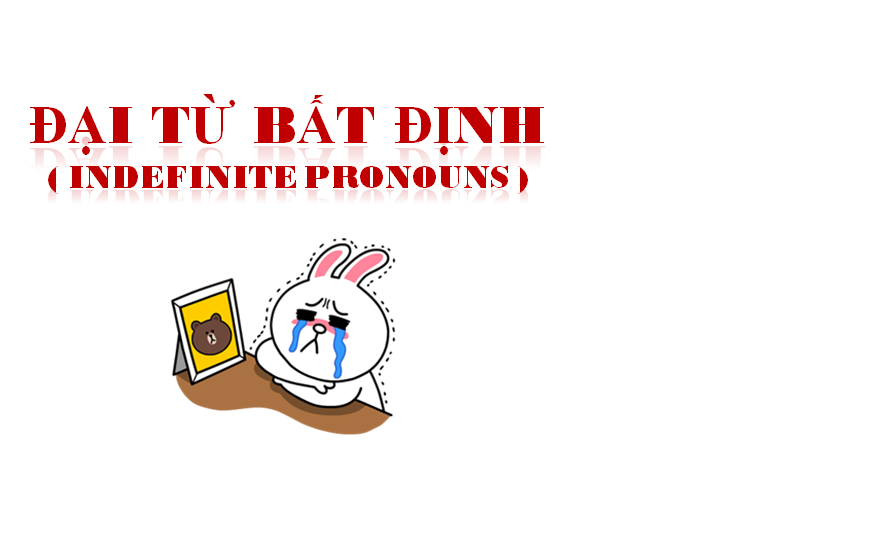
a. Some: một vài
- Thường dùng trong câu khẳng định.
- Some có thể đi với danh từ đếm được số nhiều.
- Some có thể đi với danh từ không đếm được.
Ví dụ: – Some students like learning English.
– We bought some bread for lunch. => Some là tính từ bất định.
– There are ten apples on the table. Give me some => Some là đại từ bất định.
- Some dùng trong câu nghi vấn chỉ lời mời.
Ví dụ: – Would you like some coffee?
- Some đứng trước danh từ số ít đếm được và có nghĩa là “nào đó”.
Ví dụ: – Some man at the door wants to see you.
Lưu ý: Sometimes, Some time & Some times
- Sometimes (adv): thỉnh thoảng
Ví dụ: I sometimes watch TV.
- Some time: lúc nào đó
Ví dụ: I’ll visit you again some time.
- Some times: một vài lần
Ví dụ: I’ve watched this film some times.
b. Any
- Dùng trong câu phủ định và nghi vấn,
- Có thể đứng trước danh từ không đếm được lẫn danh từ đếm được số ít và số nhiều.
Ví dụ: – I haven’t read any books by Charles Dickens.
– Do you know any French?
- ANY trong câu khẳng định, có nghĩa là “bất cứ”, mang ý nghĩa nhấn mạnh.
Ví dụ: – Please phone me any day next week.
– I can do anything for you.
c. No = Not any
Là tính từ, đứng trước danh từ số ít lẫn số nhiều, và danh từ không đếm được.
Ví dụ:
I don’t have any money. = I have no money.
I didn’t have any money. = I had no money.
Lưu ý: Cần chia động từ cho phù hợp:
- Nếu no/any + danh từ không đếm được/danh từ số ít thì chia động từ số ít;
Ví dụ: – No example is relevant to this case. (No + Danh từ số ít)
– There is no coffee. (No + danh từ không đếm được)
- Nếu no/any + danh từ đếm được số nhiều thì chia động từ số nhiều.
Ví dụ: – No words can express my happiness. (No + Danh từ số nhiều)
d. Not
- Là trạng từ, không thể đứng trước một danh từ
- Not + a + Danh từ đếm được số ít: không một
- Not + many/much + N: không nhiều
Ví dụ: Not a student understands the lesson he’s just explained.
Not many students understand the lesson he’s just explained
Not much time left.
They have not any friends in this city.
e. None
- Là đại từ, có nghĩa là no one, nothing…
- Có thể đứng trước danh từ đếm được số ít hoặc số nhiều, và danh từ không đếm được.
Ví dụ: I have no apples. I had some last year but I had none this year.
- Cấu trúc: None of the + danh từ
Ví dụ: – None of the guests want to stay there longer.
– None of the counterfeit money has been found.
Một số trường hợp đặc biệt của any/some/none:
- any/some/none (Đại từ bất định) + of + the + N
Ví dụ: – Some of my staff can speak Japanese.
– Did any of your staff leave early yesterday?
- Hardly any:
Ví dụ: I have hardly any free time.
- without any = with no:
Ví dụ: I passed the exam without any difficulties. = I passed the exam with no difficulties.
- Someone = somebody/something
- Anyone = anybody/anything + động
No one (# None) = Nobody/nothing từ số ít
Ví dụ: Someone at the door wants to see you.
There is something I want to talk to you.
Is there anyone/anybody home?
I can do anything for you
I do nothing on Sunday.
• Có thể sử dụng sở hữu cách với những từ bất định trên
Ví dụ: Mr. James unintentionally took someone’s report.
• Có thể thêm từ “else” (nữa, khác) vào sau những từ bất định trên
Ví dụ: Do you want anything else?
• Có thể kết hợp “some, any, no” với từ “where”: somewhere, anywhere, nowhere
Ví dụ: I can’t find my wallet anywhere.
= I can find my wallet nowhere.
= Nowhere can I find my wallet.
f. One – Another – The other; Some – other/others – the others
Ví dụ: I have 4 pencils. One is red. Another is blue. Another is black. The other (pencil) is grey.
This pen doesn’t work. Can you give me another?
There are 12 members in my group. Some like MU. Other members/others like Chelsea. The others like Liverpool.
• Other: là Tính từ, thường đứng trước danh từ số nhiều.
Ví dụ: Other people may disagree with your ideas.
He was at the library with two other students.
• Others: là đại từ = Other + Noun(s)
Ví dụ: Some people drink beer. Other people/Others drink wine.
• The others: là đại từ = The other + Noun(s)
Ví dụ: I can’t do the 4th and the 5th questions, but have done all the others.
Lưu ý các cách diễn đạt:
• from one……….to another
Ví dụ: Beggars travel from one city to another.
• On one hand,….. On the other hand……………. (Hay dùng trong viết luận)
• each other & one another
• each other: dùng khi chỉ có 2 người.
Ví dụ: Mary and Tom love each other
• one another: dùng khi có từ 3 người trở lên
Ví dụ: Through the Internet, people are discovering new ways to share relevant information with one another.
• Another còn có nghĩa là thêm nữa
Ví dụ: Would you like another cup of coffee?
g. Both: cả hai
• Both + N (s,es)
Ví dụ: Both students are clever. => Both là tính từ bất định
• Both of + the/these/those hay các sở hữu:
Ví dụ: both of the students are clever. => Both là đại từ bất định
• Both of + us/you/them:
Ví dụ: Both of them are clever.
• Đại từ nhân xưng + both cũng có thể dùng được:
Ví dụ: We both knew him.
They both like coffee.
• Both S1 and S2 + V Số nhiều
Ví dụ: Both the teacher and her student like Chelsea.
It was both cold and wet.
He is both an actor and a director.
He both acts and directs
h. Each, every
• Each/Every + Nđ số ít + V Số ít
Ví dụ: – Every/Each student needs to have a notebook => tính từ bất định
– Each of students needs to have a notebook => đại từ bất định
Lưu ý: Each có thể đi sau danh từ
Ví dụ: – The students each need to have a notebook.
Lưu ý:
Everyone = Everybody/Everything + Vsố ít
– All people = All the people + V Số nhiều
i. All
• All + N số nhiều + V số nhiều (All là tính từ)
Ví dụ: All students must do homework
• All of the + N số nhiều + V số nhiều (All là đại từ)
Ví dụ: All of the students like my lessons.
• All of + đại từ nhân xưng: All of us = We all, All of you = you all
Ví dụ: We all like apples = All of us like apples.
All of us are ready = We are all ready.
We are all waiting for you.
k. Either, Neither
• Either/Neither +N
Ví dụ: Trees grow on either side of the street.
= both sides
Neither student is good at maths.
• Either/Neither + of + the + N+ V số ít
Ví dụ: – Either of the students doesn’t understand my lesson.
– Neither of the students understands my lesson.
• Either………..or & Neither……….nor
Ví dụ:- He didn’t either phone or write to me.
– I bought a very expensive house but it is neither large nor bright.
Lưu ý: Động từ chia theo S2
- Either + S1 + or + S2
- Neither + S1 + or + S2
- not only +S1 + but also + S2
l. Most, most of, almost
• Most + Nđđ số nhiều + V số nhiều
Ví dụ: Most students are afraid of history.
Most of the students are afraid of history.
⇒ most students là hầu hết mọi học sinh
⇒ most of the students: hầu hết các học sinh đó (đã xác định) phạm vi hẹp hơn most students.
• Almost: hầu hết, gần như + adj
Almost: suýt nữa + V
Ví dụ: Dinner is almost ready.
He fell from the tree and almost broke his leg.
Lưu ý: Nếu muốn dùng almost với danh từ thì phải có every, all…
- Almost + every + Nđđ số ít
- Almost everyone
- tất cả: Động từ số ít
• Almost + all of the + Nđđ số nhiều + V Số nhiều
Ví dụ: – Almost every student is afraid of history.
– Almost all of the students are afraid of history.
m. Mostly
Là trạng từ của từ most, đứng trước động từ
Ví dụ: – We mostly go out on Sunday.
– We lost the game mostly because the goalkeeper was injured.
n. Few/A few
• Few/A few + Nđđ số nhiều
Ví dụ: Few people live to be 100 years old
I have read a few books written by Charles Dickens.
⇒ “Few” mang nghĩa tiêu cực là rất ít, hầu như không.
⇒ “A few” mang nghĩa tích cực, có nghĩa là một vài
• A few là đại từ:
Ví dụ: Many people went there but a few survived.
I knew a few of his friends.
o. Little/A little
• Little/A little + N ko đđ + V số ít
Ví dụ: We just have little time before the train leaves, so we can’t go for a drink.
We have a little time before the train left.
Let’s go for a drink.
⇒ “Little” mang nghĩa tiêu cực là rất ít, hầu như không.
⇒ “A little” nghĩa xác định.
• Little/A little là đại từ
Ví dụ: He knows little about science.
There was a lot of food, but I only ate a little.
3. Bài tập vận dụng
- Bài tập câu trực tiếp gián tiếp và công thức ứng dụng chi tiết
- Công thức và bài tập áp dụng câu tường thuật chi tiết nhất
- List các danh từ trong tiếng Anh & danh từ đếm được và không đếm được
Bài tập: Choose the right word to fill in each of the following blank.
- You and Nam ate all of the ice cream by _______.
A. yourselves B. himself C. themselves D. yourself
- What is _______your phone number?
A. you B. your C. yours D. all are right
- Where are _______ friends now?
A. your B. you C. yours D. A and B are right
- Here is a postcard from _______ friend Peggy.
A. me B. mine C. my D. all are right
- She lives in Australia now with _______ family.
A. she B. her C. hers D. A and b are right
- _______ company builds ships.
A. He B. His C. Him D. All are right
- _______ children go to school in Newcastle.
A. They B. Their C. Them D. Theirs
- Nam and Ba painted the house by _______.
yourself B. himself C. themselves D. itself
- The exam _______ wasn’t difficult, but exam room was horrible.
A. himself B. herself C. myself D. itself
- Never mind. I and Nam will do it _______.
A. herself B. myself C. themselves D. ourselves
- You _______ asked us to do it.
A. yourselves B. herself C. myself D. theirselves
- They recommend this book even though they have never read it _______.
A. yourself B. himself C. themselves D. itself
Đáp án:
1. A 2. B 3. A 4. C 5. B 6. B 7. B 8.C 9. D 10. D 11. A 12. C
Hy vọng với những kiến thức bổ ích và bài tập mà tienganhduhoc.vn đã chia sẻ ở trên, các bạn đã nắm rõ các loại đại từ trong tiếng Anh và cách sử dụng chúng. Nếu các bạn có thắc mắc gì về chủ điểm ngữ pháp này, hãy comment xuống dưới nhé.




